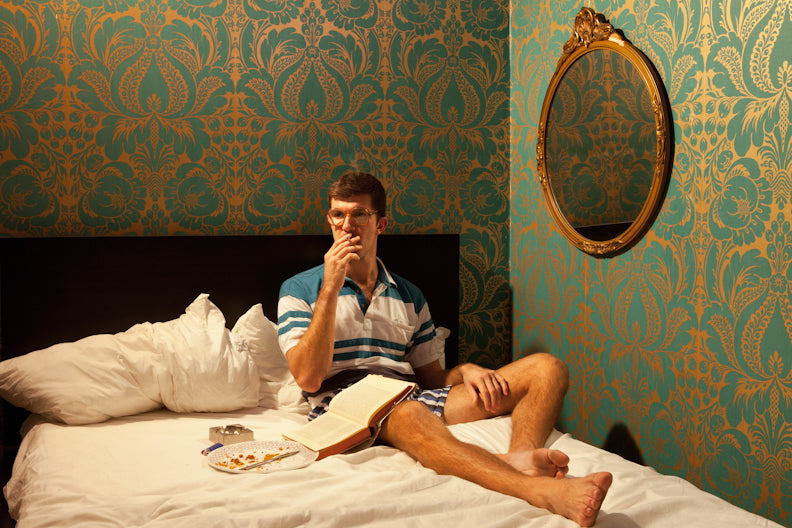Justin Bettman last spoke with us about his Bagel Project, and today he's taking some time to tell us a little bit about his stunning Dark series. Be sure to check out the rest of Justin's astonishing work here.
Tell us a little bit about your Dark project and what it's all about.
The dark series started out as a few images and evolved into a body of work. Prior to doing this series, my work was all shot during the day with really bright, dynamic colors, and I wanted to try doing the complete opposite. I also wanted the content of the work to make viewers feel uncomfortable without them knowing exactly why they feel uncomfortable.
What do you hope your viewers see in your Dark photos?
I want the viewers to feel something. I think that is really the whole point of making a photograph. In these photos I tried to have viewers feel uncomfortable or awkward by introducing conflict, both internally and externally.
Where do you find your inspiration for each of these images?
I typically get concepts for my photographs while running or biking. I try to run everyday and to never run the same route twice so I can see and find as many locations as possible. Sometimes the location will dictate the story, sometimes the other way around. Some photographers that really influenced me on this series are Ryan Schude (who I actually collaborated with on the Red House photo), Philip Lorca DiCorcia, Gregory Crewdson, and Alex Prager.
What's your process when you start a project like this? How do you take your idea and see it through completion?
Once I have a concept, the next step is finding and securing a location. This can often take weeks or months and sometimes I never find the location I want. After securing a location, I try to hash out the details further and figure out what wardrobe and props will be needed. From there I hire a stylist, hire a prop specialist (if I need one), cast for the subjects, hire a make up artist, and start drawing a lighting diagram of what lighting I think I will need.
Your lighting is always stunning. Tell us a little about the lighting techniques you used for this series.
I try to make sure that my light always comes from justified light sources. This means that you use lights to dramatize existing light (or where you can "sell it" as an existing light). For example, if there is a street lamp in the shot, I will try matching the color temperature and hide a light that will over exaggerate the existing light. I also don't like really dark shadows, so I will often times use a hazer (which is a glorified fog machine) to fill in these shadows.
What's next for you? Do you have other projects in the works?
I've been working hard on art direction, so that's my big focus right now. I'm also in the early stages of a collaboration with a miniature set designer, so hopefully the first shot of that series will be done soon.
KEEP UP WITH JUSTIN: Website | Blog | Facebook | Twitter | Flickr | Tumblr










